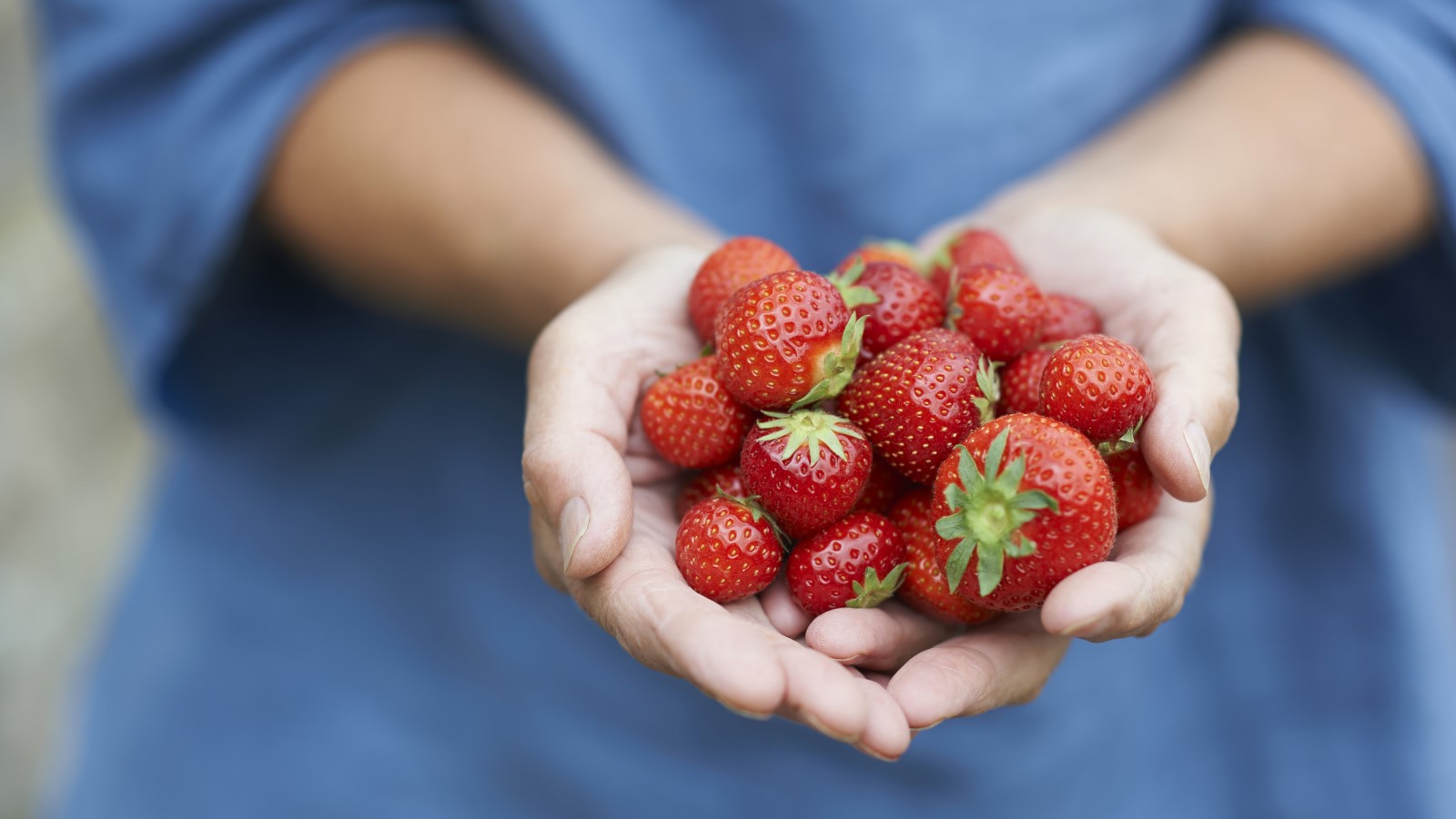
Strawberries can be grown indoors successfully, providing you can give the plants the heat and light that they need to thrive.
If you want to grow strawberries indoors then you can benefit from a potential year-round harvest of delicious fruits. While a south-facing window, sun room or enclosed front porch is capable of providing the light during the summer, you are likely to need artificial grow lights to give the plants the level of light they need through the winter months.
Learning how to grow strawberries means you can grow a huge range of delicious fruits and homegrown crops that are juicier and tastier than any bought in the store. If you want to grow strawberries indoors it may be testing, but the rewards may outweigh the challenge.
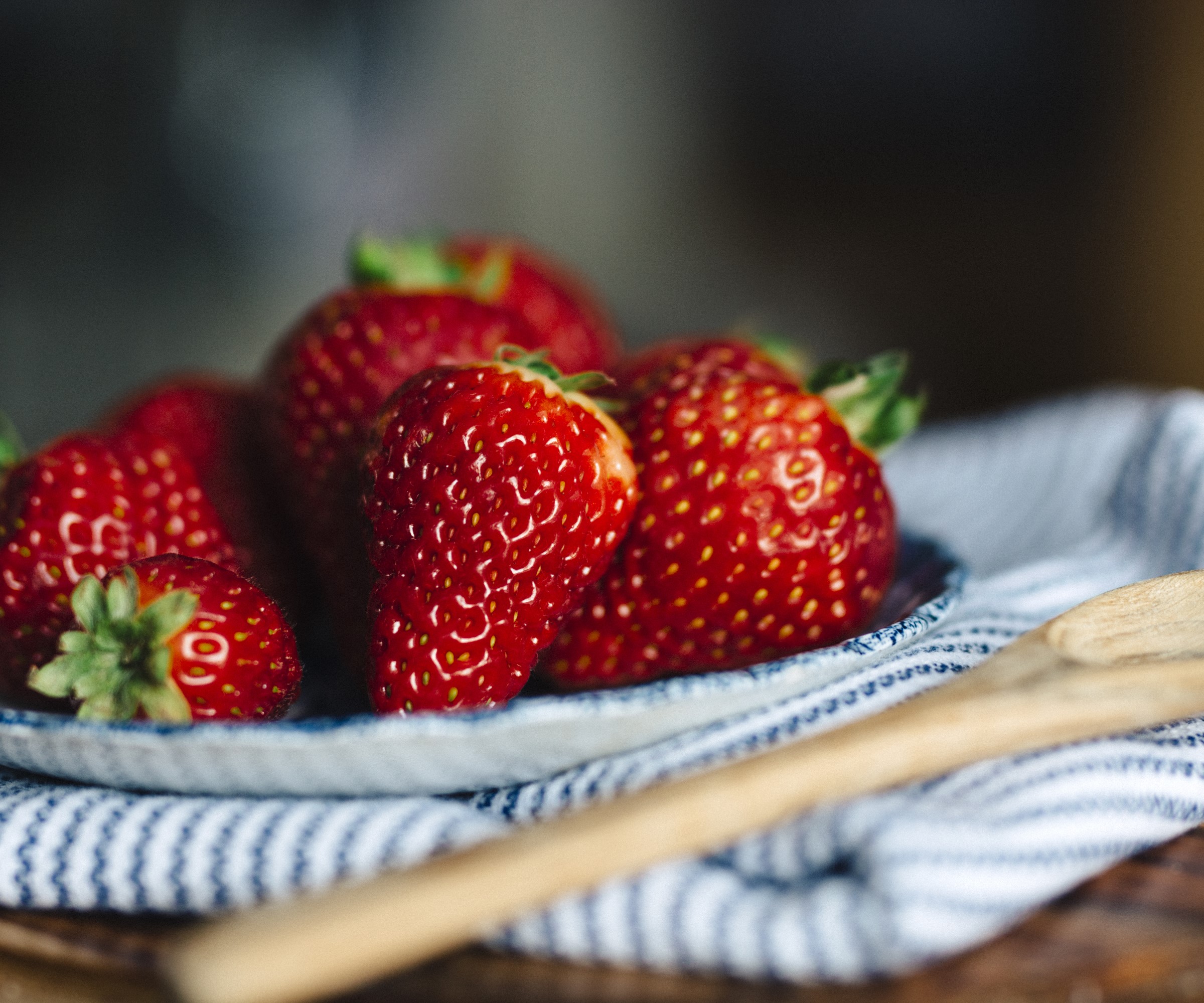
Can you grow strawberries indoors?
Strawberries are regularly grown indoors in greenhouses or polytunnels as growers can take advantage of the warm and protected environment these structures offer for their plants.
It can be more tricky to grow strawberries indoors in the home, though it is possible if you can recreate the conditions they want to grow in. It means getting the levels of heat and light correct is ever-more important. The plants should be somewhere that can give them up to 6-8 hours of direct sunlight each day, or 12-16 hours of artificial light if you use grow lights to supplement light levels. A south-facing sun room, enclosed porch, or sunny windowsill is capable of providing them with enough sunlight, though it may be difficult to achieve those levels during the winter months.
Lindsey Hyland, the founder of Urban Organic Yield, advises that doing your research to develop a ‘good understanding of the needs of your plants’ is vital when trying to grow crops indoors. However, she admits there are some good advantages to trying to grow strawberries indoors.
‘The pros of growing strawberries indoors include having access to fresh, pesticide-free fruit all year round and better controlling the environment and its temperature, humidity levels and light exposure,' says Lindsey.
On the other hand, there are real challenges and disadvantages to growing strawberries indoors and Mary Jane Duford, certified permaculture garden designer and founder of Home for the Harvest, highlights potential flaws including the likes of cost, setup effort, maintenance, and limited yields.
She claims: ‘You’ll need to invest in plant lights, growing medium, and planters or another growing system. Once your indoor garden has been set up, you’ll still need to top up the water and add nutrients for the plants on a regular basis. The flowers also need to be hand pollinated to set fruit. And unless you invest in a high-quality setup, yields are likely limited in comparison to outdoor-grown plants.’
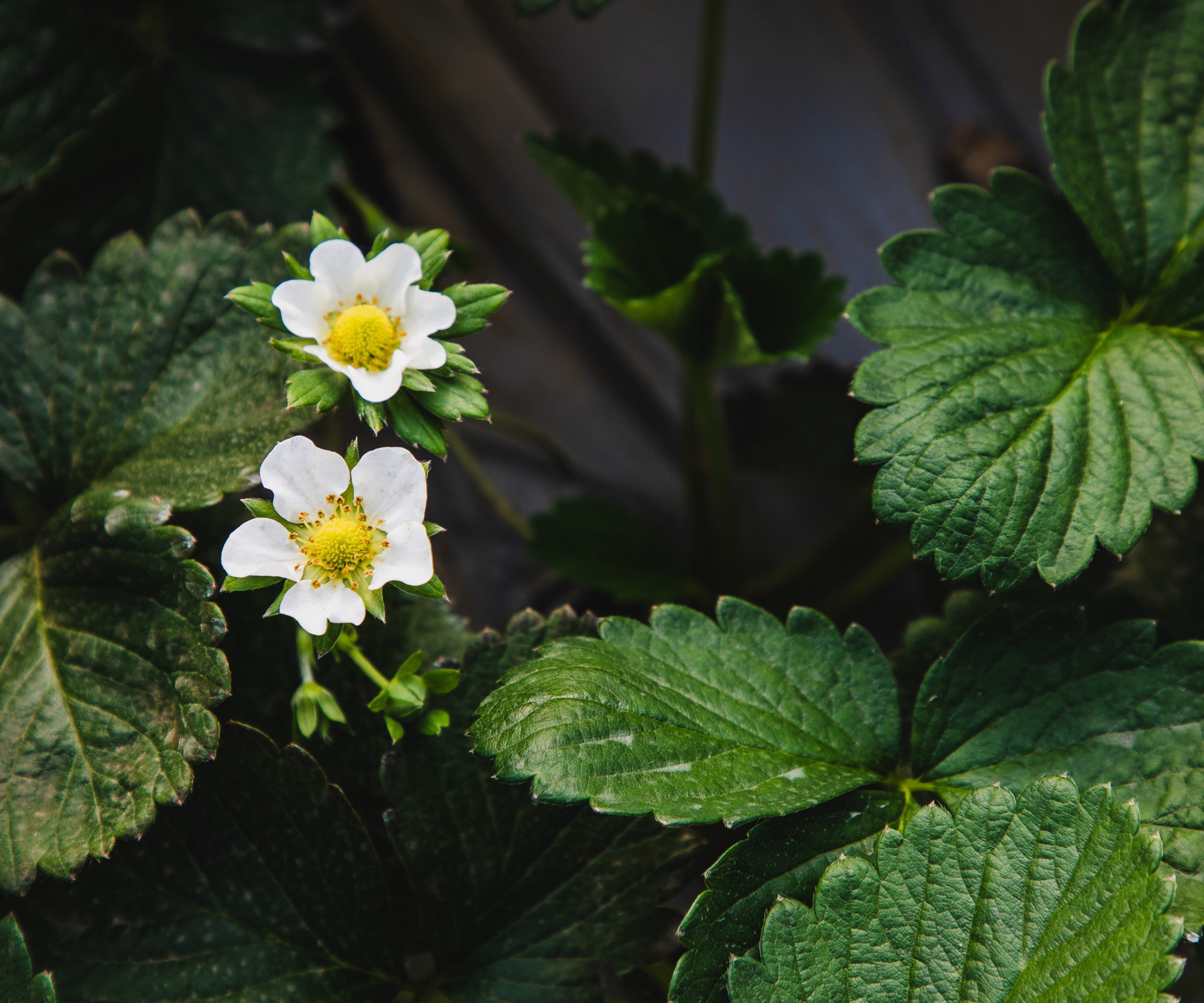
How to grow strawberries indoors
When you plant strawberries to grow indoors you can use plants raised from seed, from runners of existing strawberry plants, or young plants bought from the store or online.
Strawberry plants are often bought and delivered bare root from retailers in spring and can be planted immediately to fruit in their first season. Plants grown from seed or runners will not fruit until their second year. Ensure to choose varieties of strawberries that are suitable for container growing.
- Choose a sizable container for growing strawberries in pots indoors, ideally one around 12 inches wide and 12 inches deep. The best methods of growing strawberries indoors are to utilize hanging baskets, pots, or hydroponic smart gardens
- Make sure the chosen container has good holes for drainage. If you are using pots indoors remember to place a tray underneath the pot to collect all the excess water that comes out of the drainage holes
- Fill the container with a potting soil that is rich in organic matter. Strawberries prefer a loose potting compost that will hold water and drain any excess well. Incorporate a handful of slow-release general fertilizer into the potting mix, such as Osmocote Smart-Release Plant Food available at Walmart
- Plant no more than three strawberry plants to a 12 inch pot or hanging basket. Make sure that each plant is sitting so their crown is just above the soil surface
- Water the container well. Strawberries want moist soil but not to be sitting in soggy compost so check regularly for when to water plants. Pots will dry out faster than soil outdoors
- Place the pot in a spot that gets at least 6-8 hours of direct sunlight each day. The light can be supplemented with artificial lighting such as fluorescent or halogen lights. If grow lights are used they need to give an even spread of light over the plants, so consider rotating the plants every few days to give them consistent exposure to natural and artificial lights. One example of LED grow lights to use is the Hytekgro LED Grow Light available at Amazon
- Knowing when to fertilize strawberries is important for indoor pot-grown plants. Along with the general fertilizer at the time of planting, feed the plants with a liquid general fertilizer every few weeks. When the first flowers appear, use a high-potassium fertilizer, such as a tomato feed, every week or two. An example of a tomato feed to use is the Schultz Water Soluble Tomato Food available at Amazon.

Best strawberries to grow indoors
Any variety of strawberry is capable of being able to grow indoors, providing you can provide the right conditions. There are many types of strawberry and the plants come in everbearing varieties, which produce fruit multiple times over a season, and June-bearing varieties that give you a main crop in June and another in early fall.
Mary Jane Duford from Home for the Harvest advises that ‘day-neutral strawberry varieties tend to be the best for growing indoors’. Day-neutral strawberries are more suited to indoor growing as their fruiting is not controlled by daylight. Providing the temperature is between 40 and 90˚F, and there is enough water and nutrients for the plant, they will produce fruit.
‘They produce fruit throughout the growing season rather than during a specific time of the year. They also don’t grow nearly as many runners as classic June-bearing strawberries,’ she adds.
‘Popular day-neutral varieties include ‘Seascape’, ‘Tristar’, ‘Albion’, and ‘Tribute’. Alpine strawberry (Fragaria vesca) plants are another nice option for indoor growing. 'Albion' strawberry plants are available from Burpee, and 'Alexandra' alpine strawberry plants can also be bought from Burpee
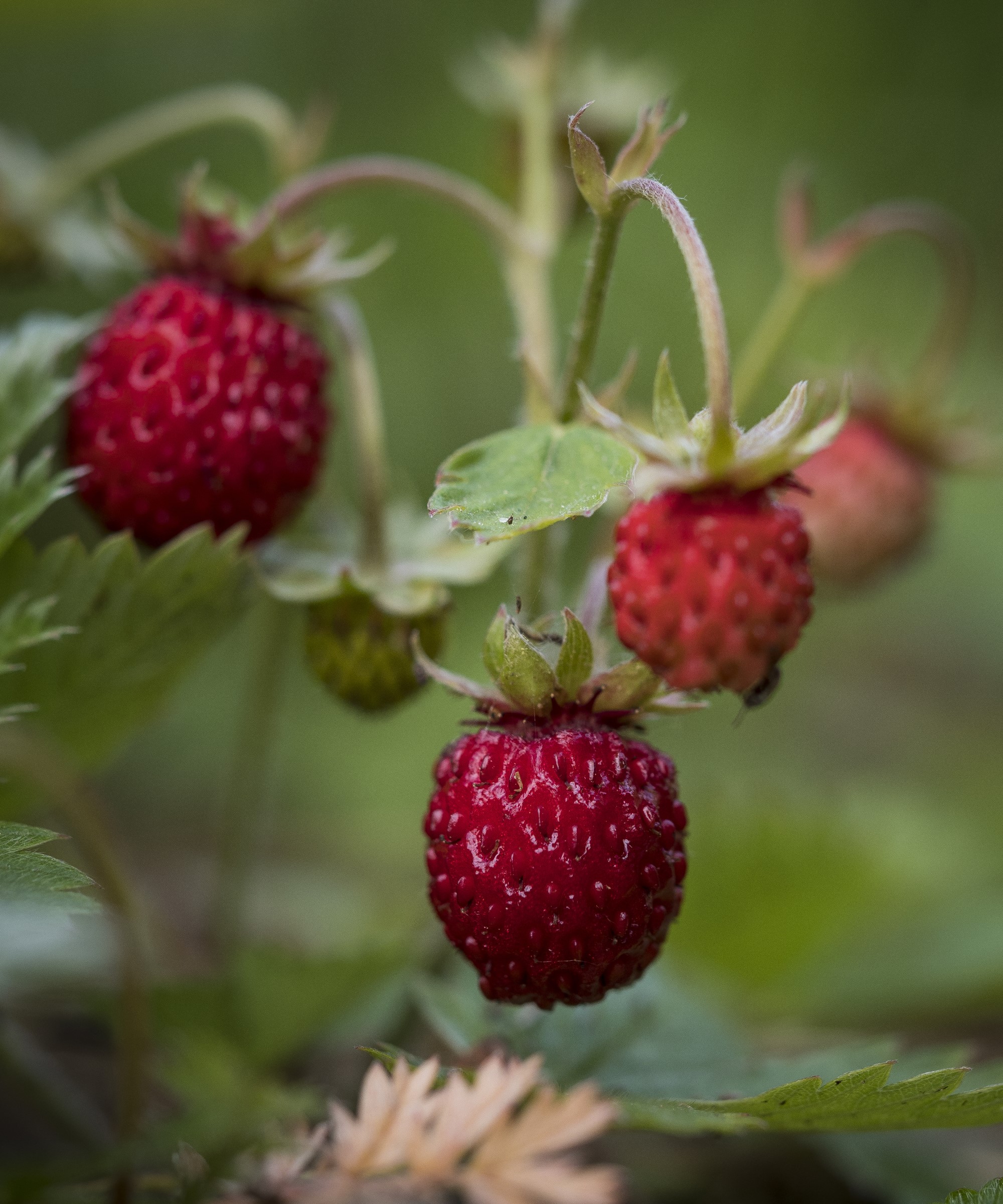
How long does it take to grow strawberries indoors?
Lindsey Hyland of Urban Organic Yield says that, depending on the variety, it can take between 65-80 days to grow strawberries indoors. This is the time from planting a bare-root strawberry plant in spring to getting a first harvest of fruit.
She adds: ‘Most varieties take about two months to reach maturity, although some varieties may require a bit longer or less. To ensure successful growing results, make sure you provide your plants with adequate light and water to maintain optimal growing conditions.’
When it comes to picking strawberries, look for fruit that is completely red, without any pink, white, or green patches, and harvest carefully to avoid bruising the fruit or damaging the plant. Strawberries will ripen at different times on the same plant so regular checking and harvesting is advised.
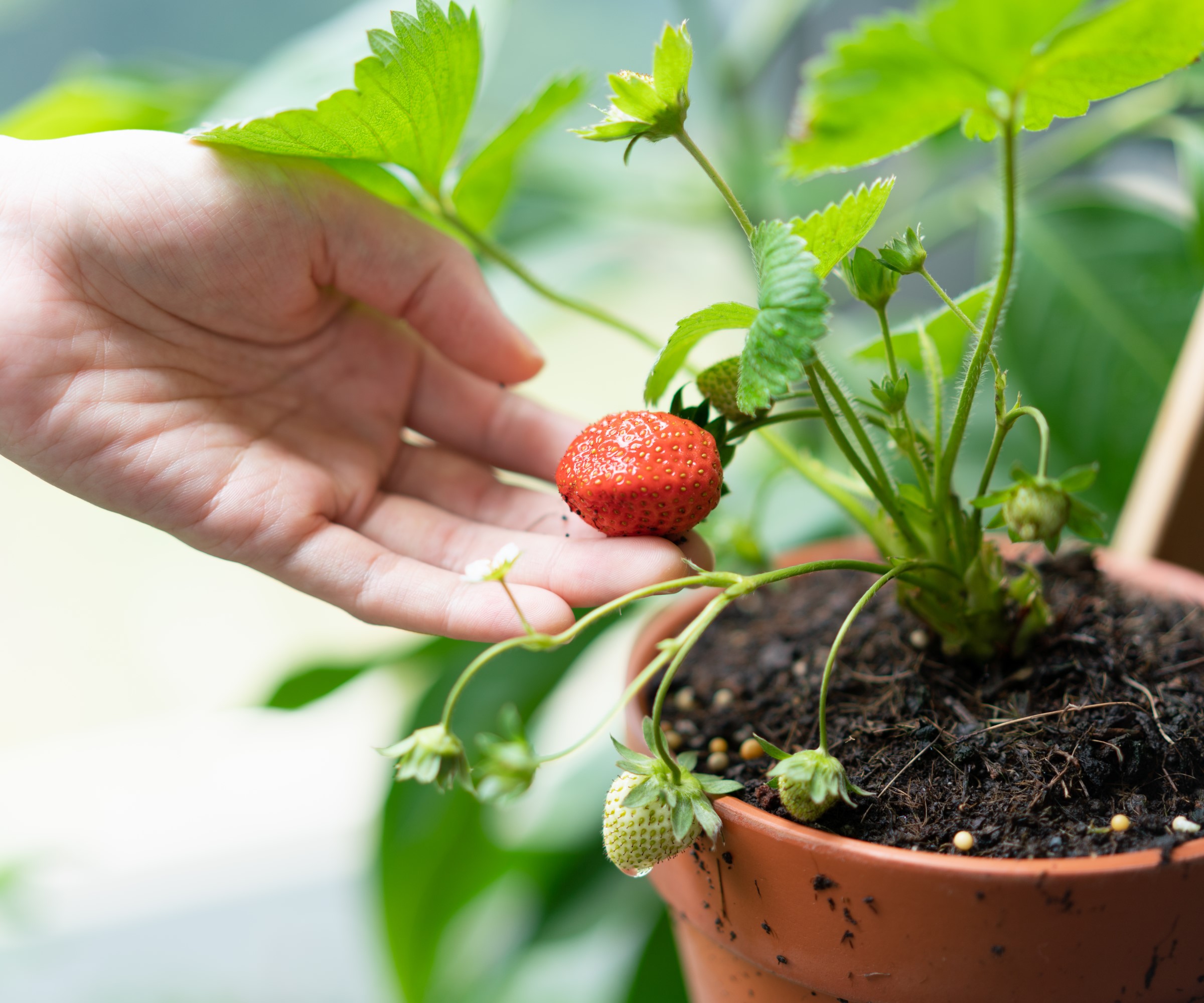
FAQs
Can you grow strawberries indoors all year round?
It is possible to grow strawberries indoors all year round though to winterize strawberries it will require extra setup. The crucial factor to achieving this will be giving the plants enough heat and light 12 months a year. Day-neutral strawberries will produce fruit as long as the temperature is between 40 and 90˚F.
Any strawberry plant will need 6-8 hours of direct sunlight each day, or 12–16 hours of artificial light. During the winter months, it is achievable to grow strawberries providing you can give them the heat and those hours of light, most likely using grow lights during the colder and darker months.
How do you pollinate strawberries indoors?
When growing strawberries indoors, it is likely that you will need to hand-pollinate the plants to get fruit. You can do this with a small paint brush, such as these Flat Paint Brushes available at Amazon, stroking the stamens with the bristles and brushing from the outside of the flower inwards to brush the pollen from the stamen to the stigma in the center of the flower. It is recommended to hand-pollinate open flowers every few days.
How often do indoor strawberry plants produce fruit?
If you grow strawberries indoors, the regularity of fruit will depend on the variety of strawberries you are growing and the health of the plants. Everbearing varieties give you multiple fruit crops during a season and June-bearing varieties fruit in June and fall. Day-neutral strawberries can give you many crops throughout the year.
Any fruiting will depend on plants getting the right amount of water and also fertilizer to give them the essential nutrients for producing fruit and flowers. Take into consideration how to store strawberries when you are choosing which types to grow.
Growing strawberries indoors is not without its challenges, however it offers a good solution for anyone without outdoor space for a kitchen garden. It opens up the doors for anyone to be able to grow delicious strawberries inside the home throughout the year. Though it does require time and some investment to set up and maintain the crop, growing fruit at home can be a very rewarding hobby.







